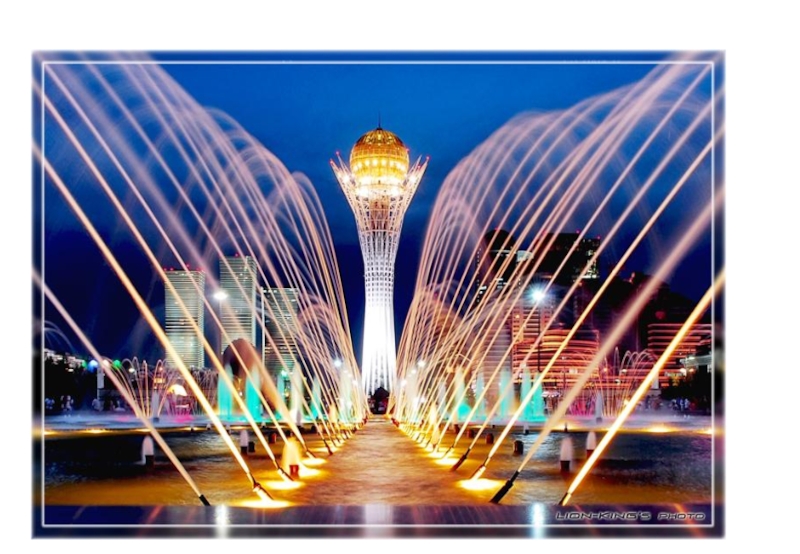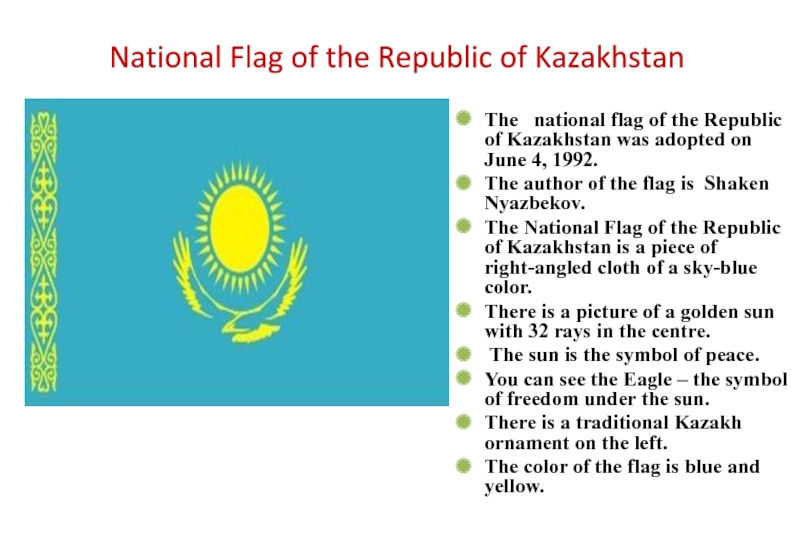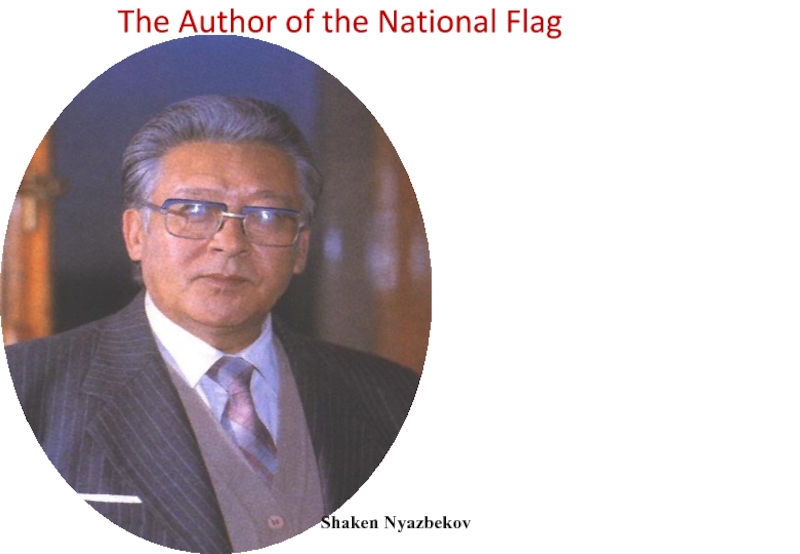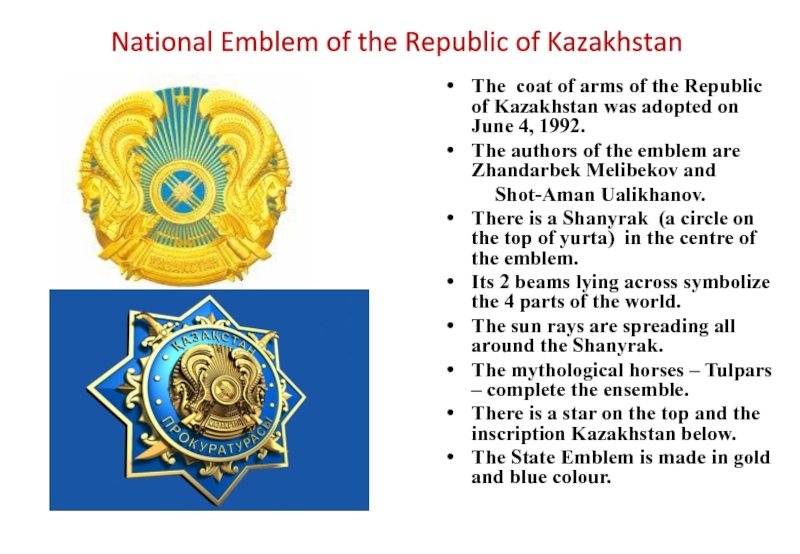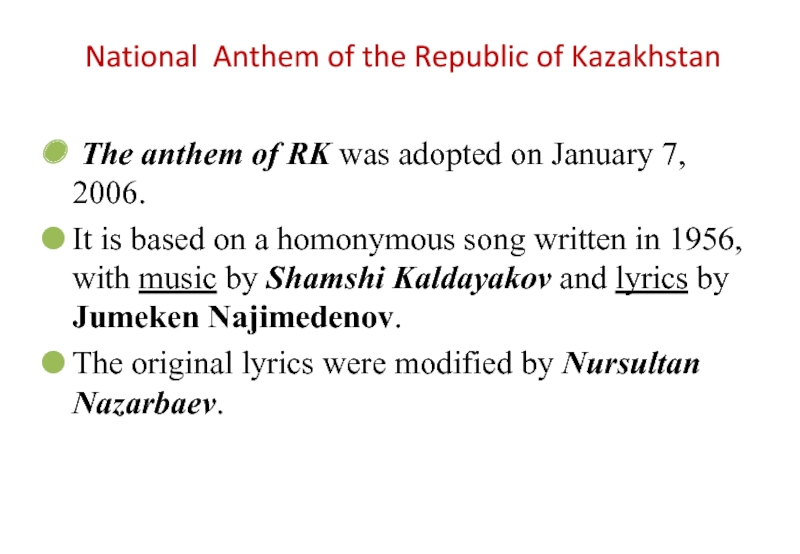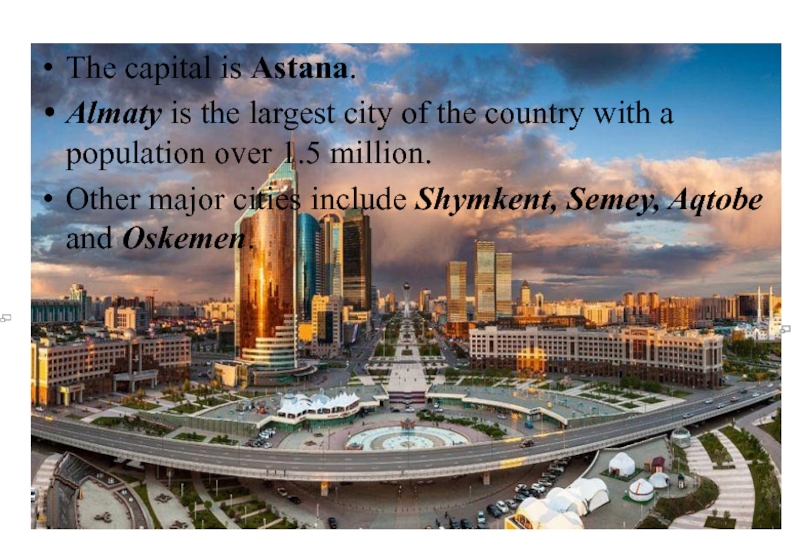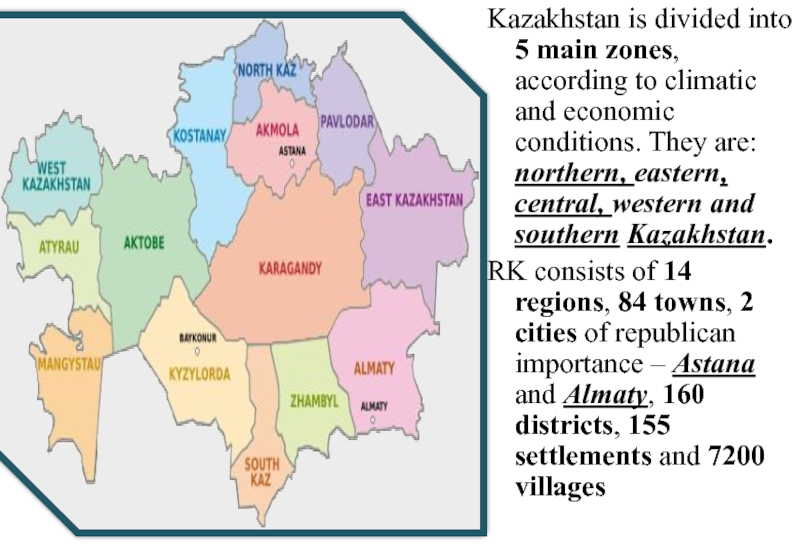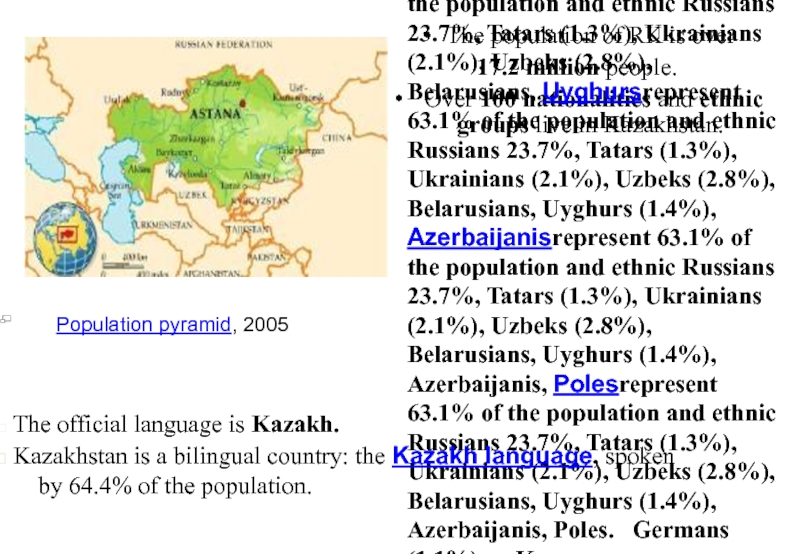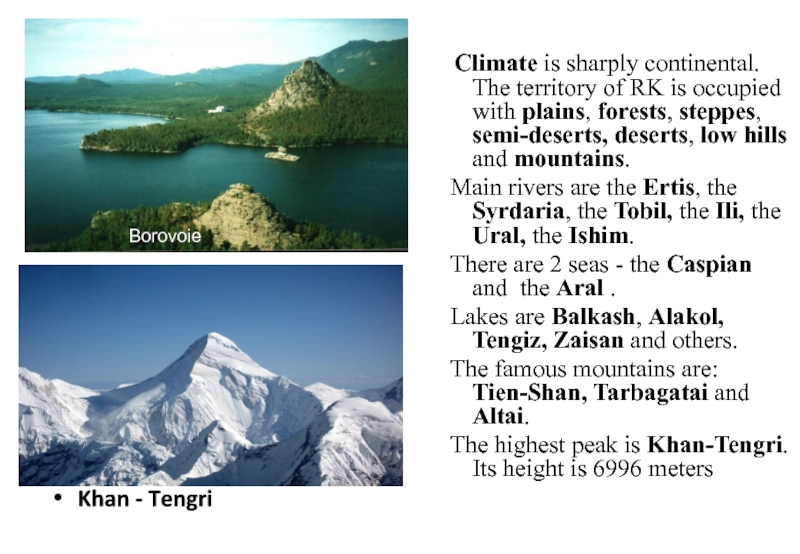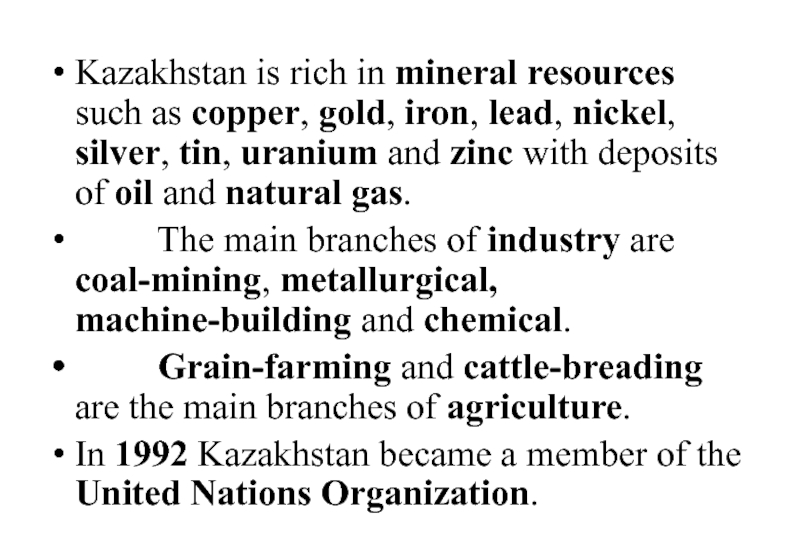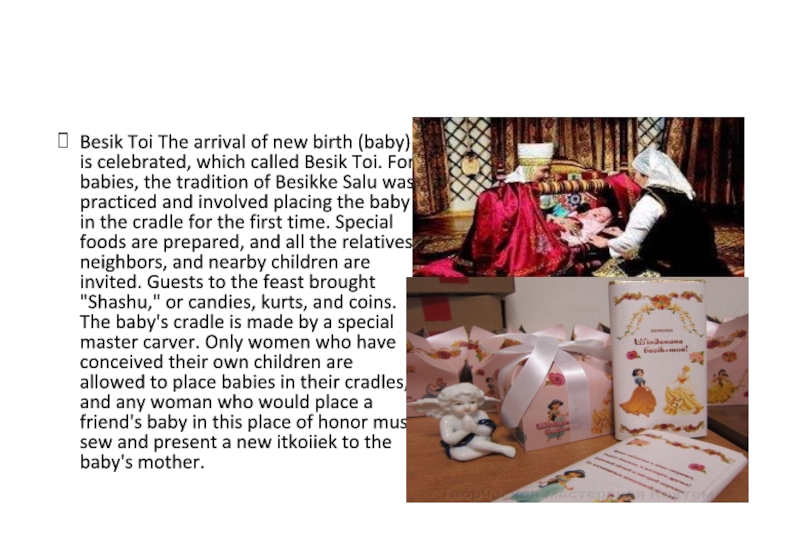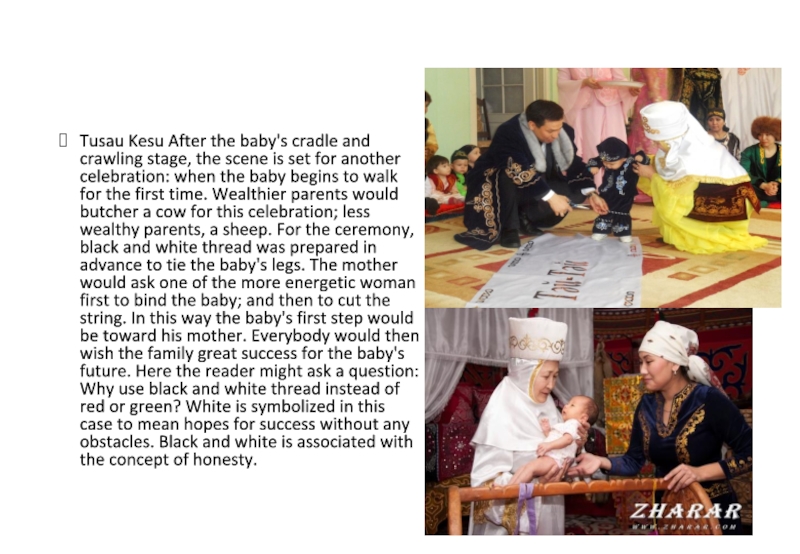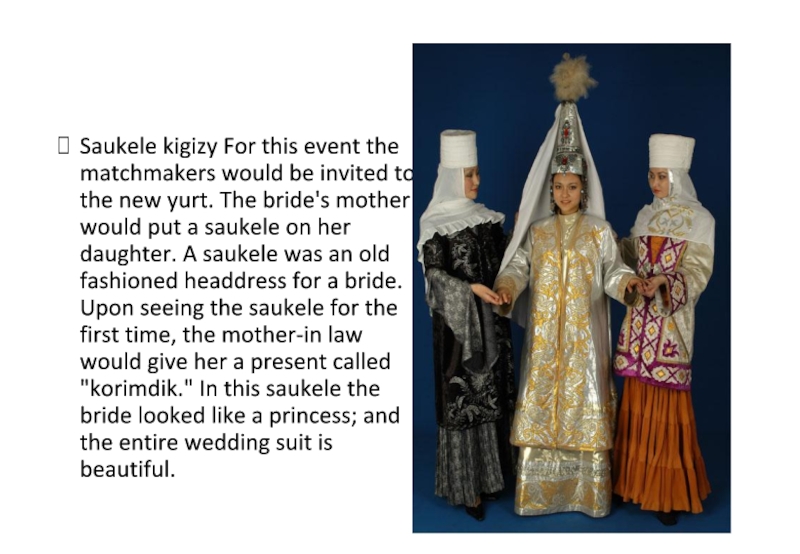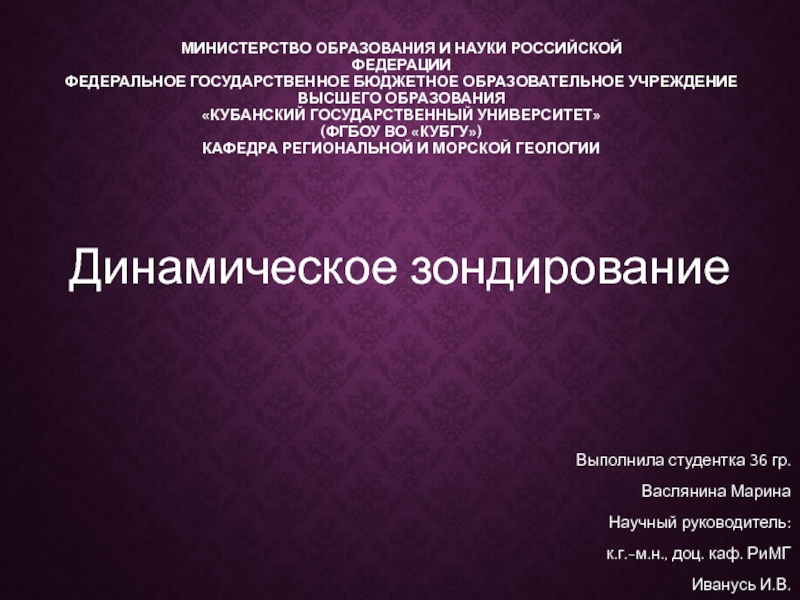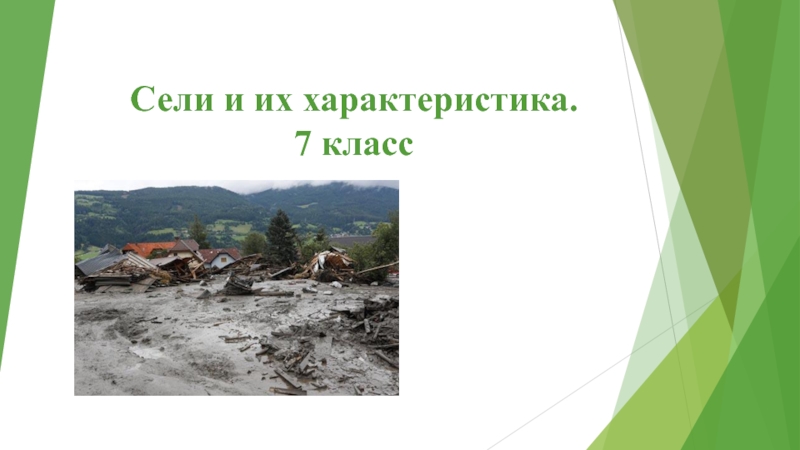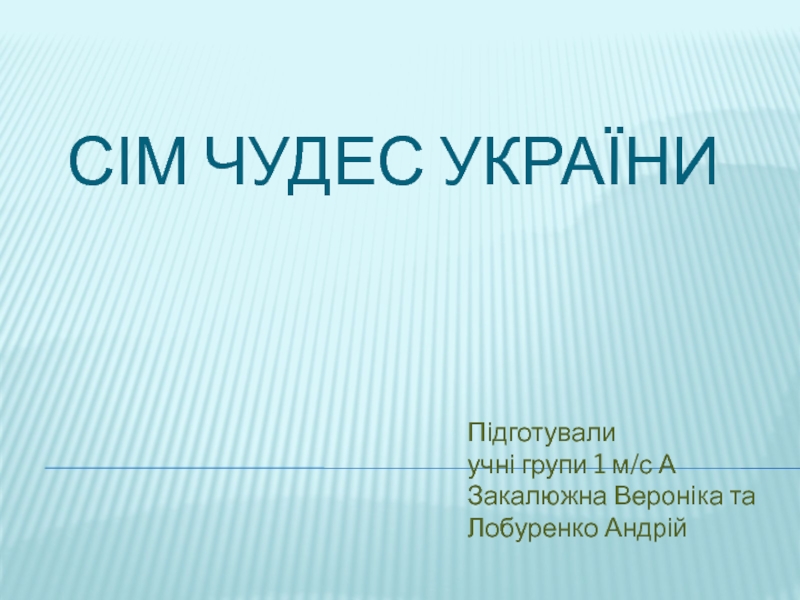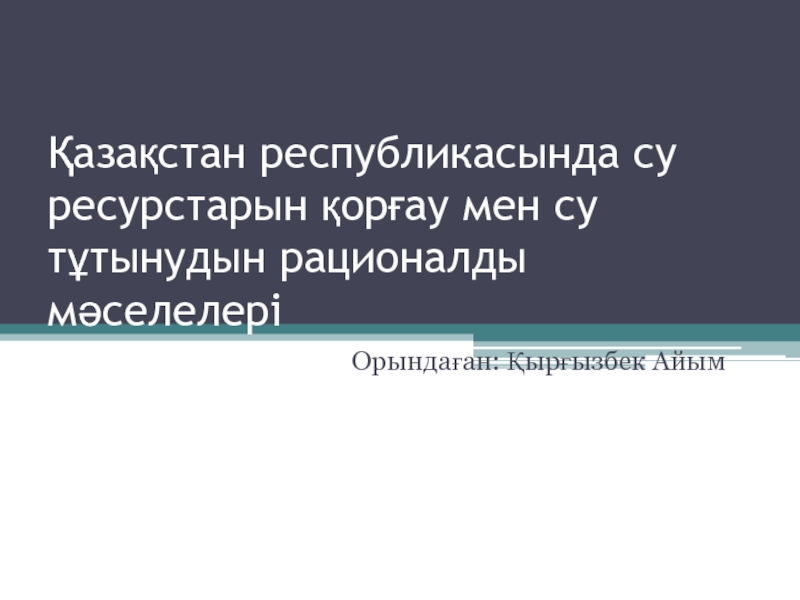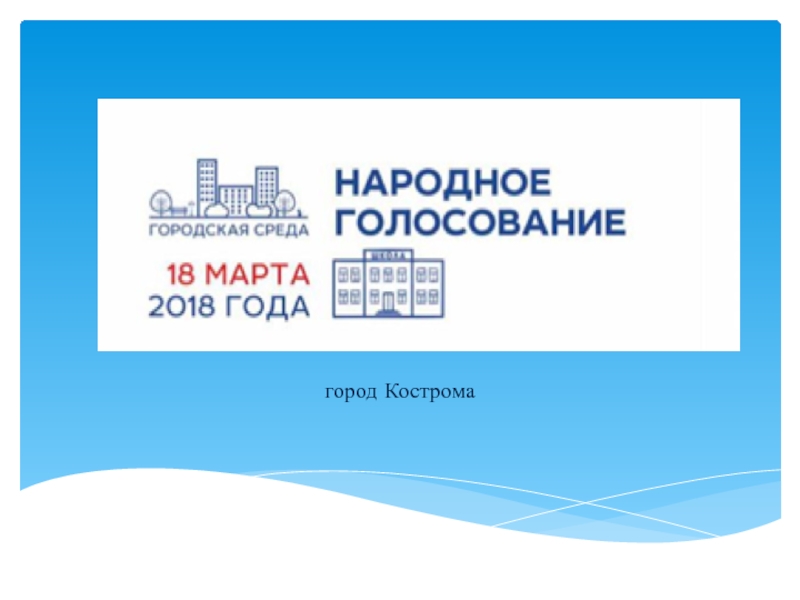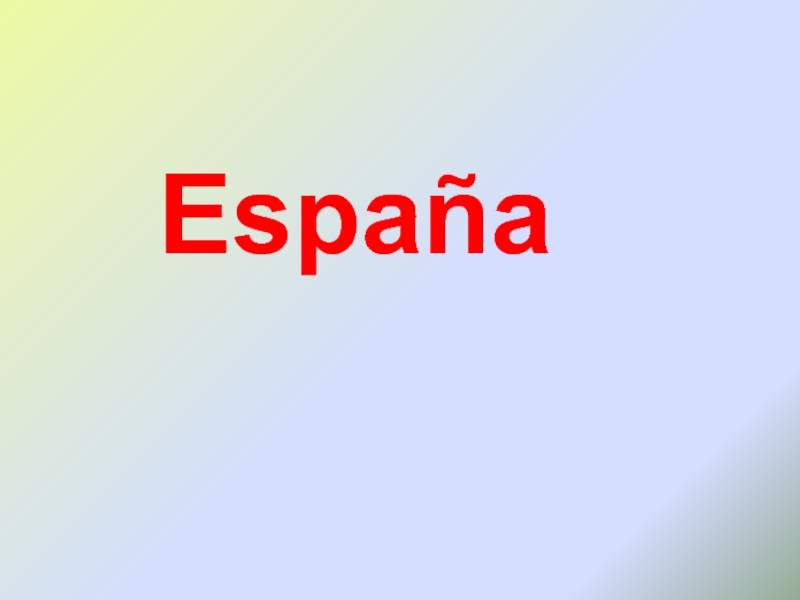- Главная
- Разное
- Дизайн
- Бизнес и предпринимательство
- Аналитика
- Образование
- Развлечения
- Красота и здоровье
- Финансы
- Государство
- Путешествия
- Спорт
- Недвижимость
- Армия
- Графика
- Культурология
- Еда и кулинария
- Лингвистика
- Английский язык
- Астрономия
- Алгебра
- Биология
- География
- Детские презентации
- Информатика
- История
- Литература
- Маркетинг
- Математика
- Медицина
- Менеджмент
- Музыка
- МХК
- Немецкий язык
- ОБЖ
- Обществознание
- Окружающий мир
- Педагогика
- Русский язык
- Технология
- Физика
- Философия
- Химия
- Шаблоны, картинки для презентаций
- Экология
- Экономика
- Юриспруденция
My motherland, my Kazakhstan презентация
Содержание
- 1. My motherland, my Kazakhstan
- 2. National Flag of the Republic of Kazakhstan
- 3. The Author of the National Flag
- 4. National Emblem of the Republic of Kazakhstan
- 5. National Anthem of the Republic of Kazakhstan
- 6. Geography of Kazakhstan
- 7. The capital is Astana. Almaty is
- 8. Kazakhstan is divided into 5 main zones,
- 9. The population of RK is over
- 10. Khan - Tengri Climate is
- 11. Kazakhstan is rich in mineral resources such
- 12. Besik Toi The arrival of new
- 13. Tusau Kesu After the baby's cradle
- 14. Saukele kigizy For this event the
Слайд 2National Flag of the Republic of Kazakhstan
The national flag of
The author of the flag is Shaken Nyazbekov.
The National Flag of the Republic of Kazakhstan is a piece of right-angled cloth of a sky-blue color.
There is a picture of a golden sun with 32 rays in the centre.
The sun is the symbol of peace.
You can see the Eagle – the symbol of freedom under the sun.
There is a traditional Kazakh ornament on the left.
The color of the flag is blue and yellow.
Слайд 4National Emblem of the Republic of Kazakhstan
The coat of arms of
The authors of the emblem are Zhandarbek Melibekov and
Shot-Aman Ualikhanov.
There is a Shanyrak (a circle on the top of yurta) in the centre of the emblem.
Its 2 beams lying across symbolize the 4 parts of the world.
The sun rays are spreading all around the Shanyrak.
The mythological horses – Tulpars – complete the ensemble.
There is a star on the top and the inscription Kazakhstan below.
The State Emblem is made in gold and blue colour.
Слайд 5National Anthem of the Republic of Kazakhstan
The anthem of RK
It is based on a homonymous song written in 1956, with music by Shamshi Kaldayakov and lyrics by Jumeken Najimedenov.
The original lyrics were modified by Nursultan Nazarbaev.
Слайд 6 Geography of Kazakhstan
Republic of Kazakhstan is in
Its total area is over 2.7 million sq. km.
It takes the 9th place according to its size.
The capital is Astana.
Слайд 7The capital is Astana.
Almaty is the largest city of the
Other major cities include Shymkent, Semey, Aqtobe and Oskemen.
Слайд 8Kazakhstan is divided into 5 main zones, according to climatic and
RK consists of 14 regions, 84 towns, 2 cities of republican importance – Astana and Almaty, 160 districts, 155 settlements and 7200 villages
Слайд 9The population of RK is over
17.2 million people.
Over 100
Population pyramid, 2005
The ethnic Kazakhs represent 63.1% of the population and ethnic Russiansrepresent 63.1% of the population and ethnic Russians 23.7%, Tatarsrepresent 63.1% of the population and ethnic Russians 23.7%, Tatars (1.3%), Ukrainiansrepresent 63.1% of the population and ethnic Russians 23.7%, Tatars (1.3%), Ukrainians (2.1%), Uzbeksrepresent 63.1% of the population and ethnic Russians 23.7%, Tatars (1.3%), Ukrainians (2.1%), Uzbeks (2.8%), Belarusiansrepresent 63.1% of the population and ethnic Russians 23.7%, Tatars (1.3%), Ukrainians (2.1%), Uzbeks (2.8%), Belarusians, Uyghursrepresent 63.1% of the population and ethnic Russians 23.7%, Tatars (1.3%), Ukrainians (2.1%), Uzbeks (2.8%), Belarusians, Uyghurs (1.4%), Azerbaijanisrepresent 63.1% of the population and ethnic Russians 23.7%, Tatars (1.3%), Ukrainians (2.1%), Uzbeks (2.8%), Belarusians, Uyghurs (1.4%), Azerbaijanis, Polesrepresent 63.1% of the population and ethnic Russians 23.7%, Tatars (1.3%), Ukrainians (2.1%), Uzbeks (2.8%), Belarusians, Uyghurs (1.4%), Azerbaijanis, Poles. Germans (1.1%), Koreans, Kurdsrepresent 63.1% of the population and ethnic Russians 23.7%, Tatars (1.3%), Ukrainians (2.1%), Uzbeks (2.8%), Belarusians, Uyghurs (1.4%), Azerbaijanis, Poles. Germans (1.1%), Koreans, Kurds, Chechensrepresent 63.1% of the population and ethnic Russians 23.7%, Tatars (1.3%), Ukrainians (2.1%), Uzbeks (2.8%), Belarusians, Uyghurs (1.4%), Azerbaijanis, Poles. Germans (1.1%), Koreans, Kurds, Chechens, Turks
The official language is Kazakh.
Kazakhstan is a bilingual country: the Kazakh language, spoken
by 64.4% of the population.
Слайд 10
Khan - Tengri
Climate is sharply continental. The territory of RK
Main rivers are the Ertis, the Syrdaria, the Tobil, the Ili, the Ural, the Ishim.
There are 2 seas - the Caspian and the Aral .
Lakes are Balkash, Alakol, Tengiz, Zaisan and others.
The famous mountains are: Tien-Shan, Tarbagatai and Altai.
The highest peak is Khan-Tengri. Its height is 6996 meters
Borovoie
Слайд 11Kazakhstan is rich in mineral resources such as copper, gold, iron,
The main branches of industry are coal-mining, metallurgical, machine-building and chemical.
Grain-farming and cattle-breading are the main branches of agriculture.
In 1992 Kazakhstan became a member of the United Nations Organization.
